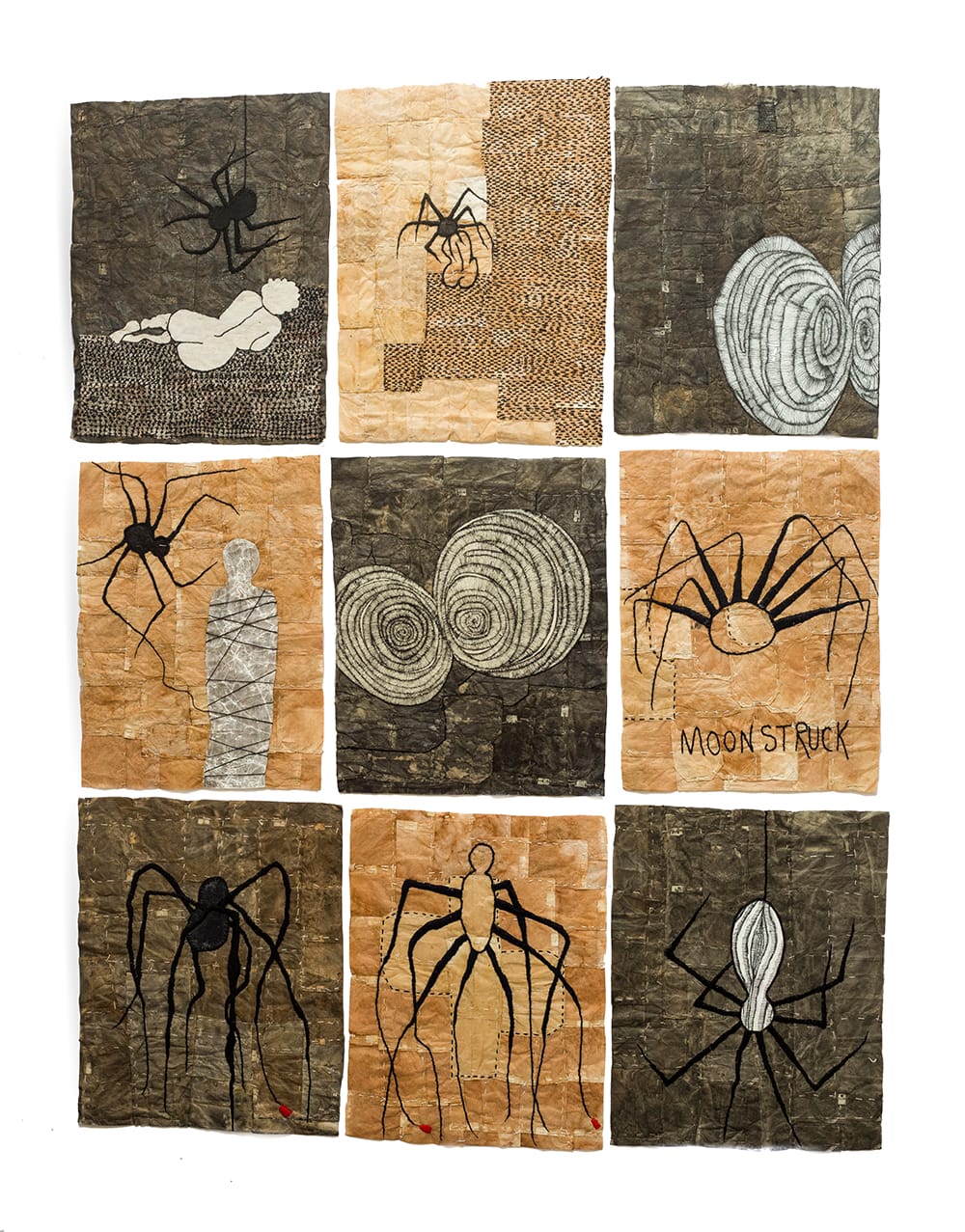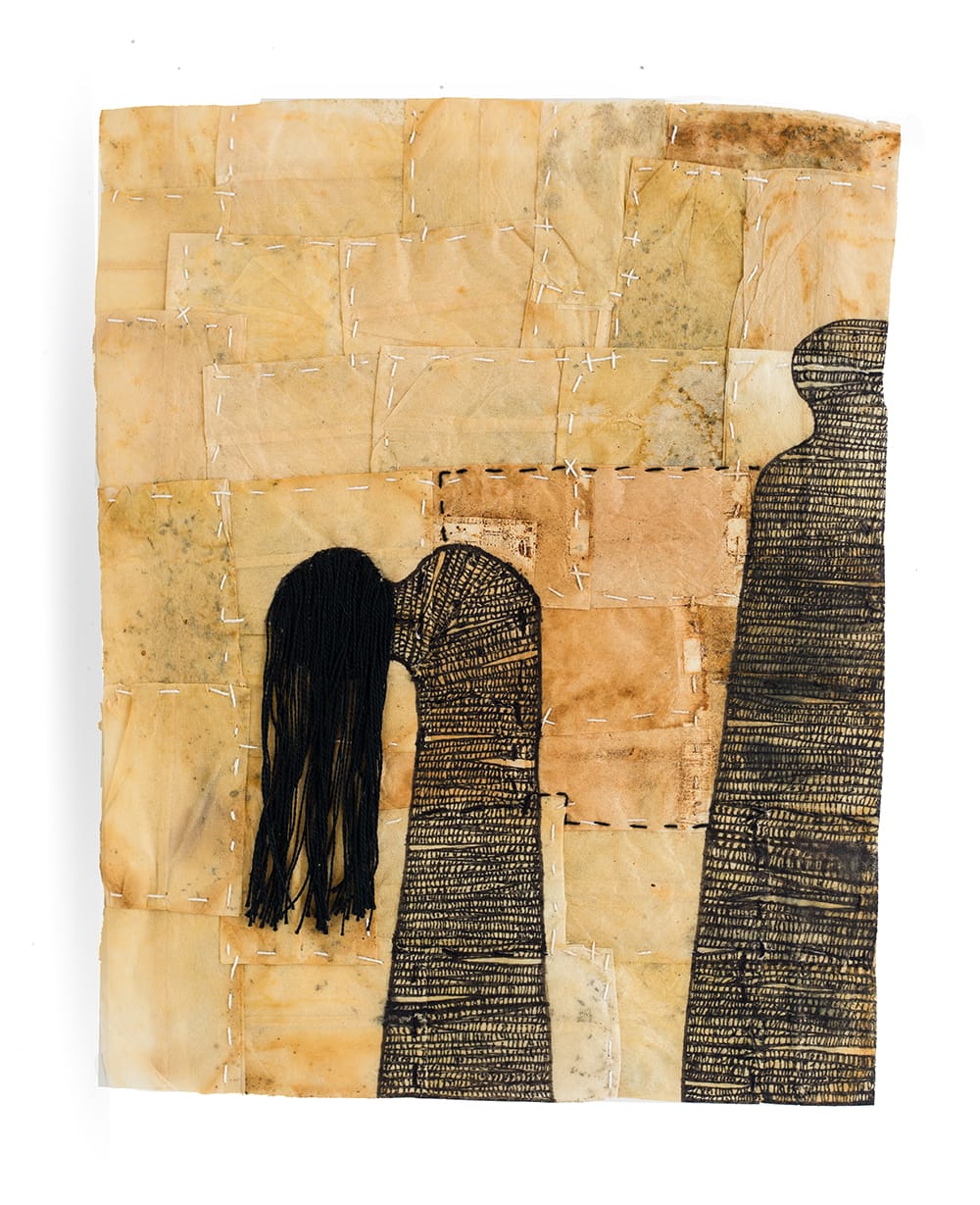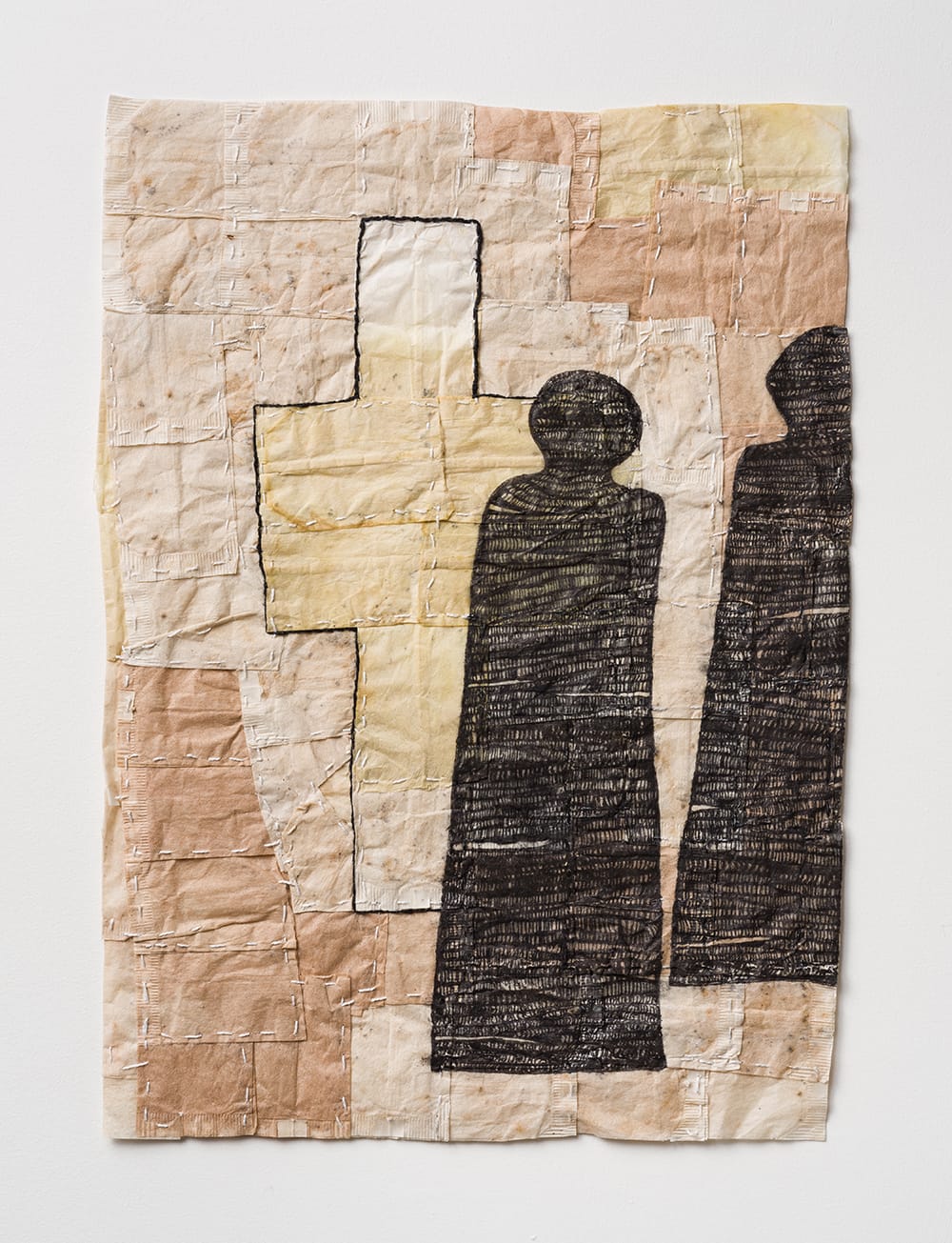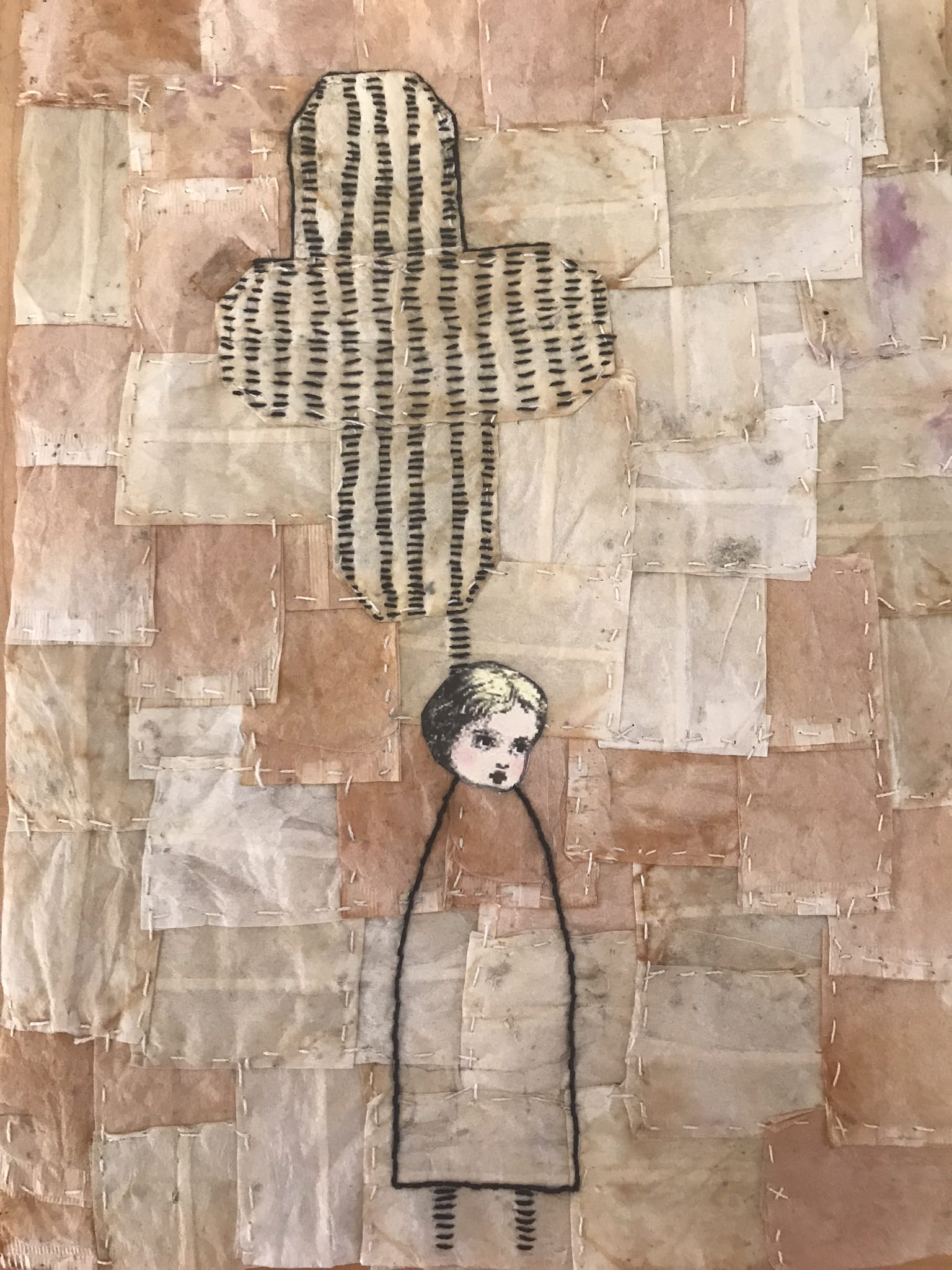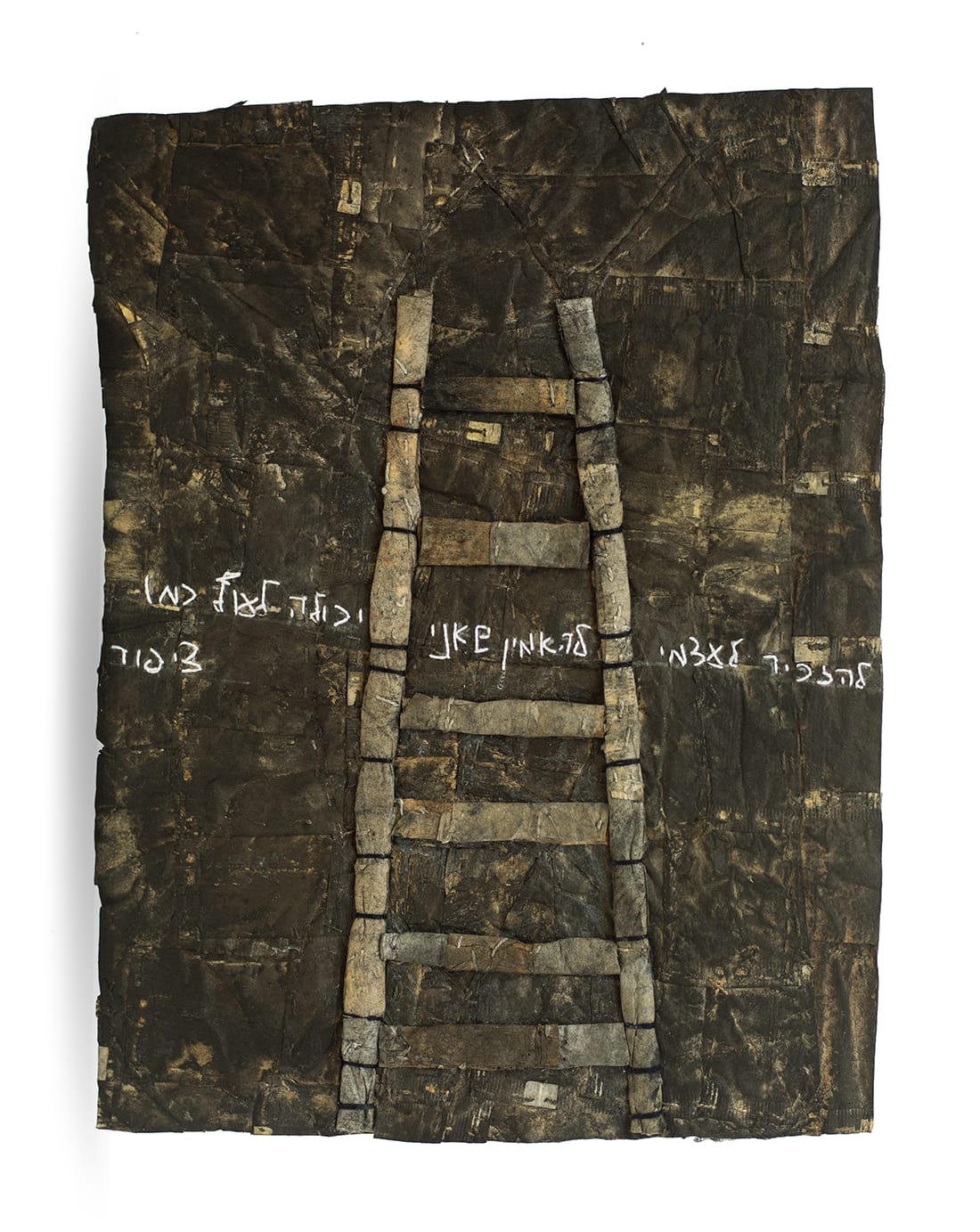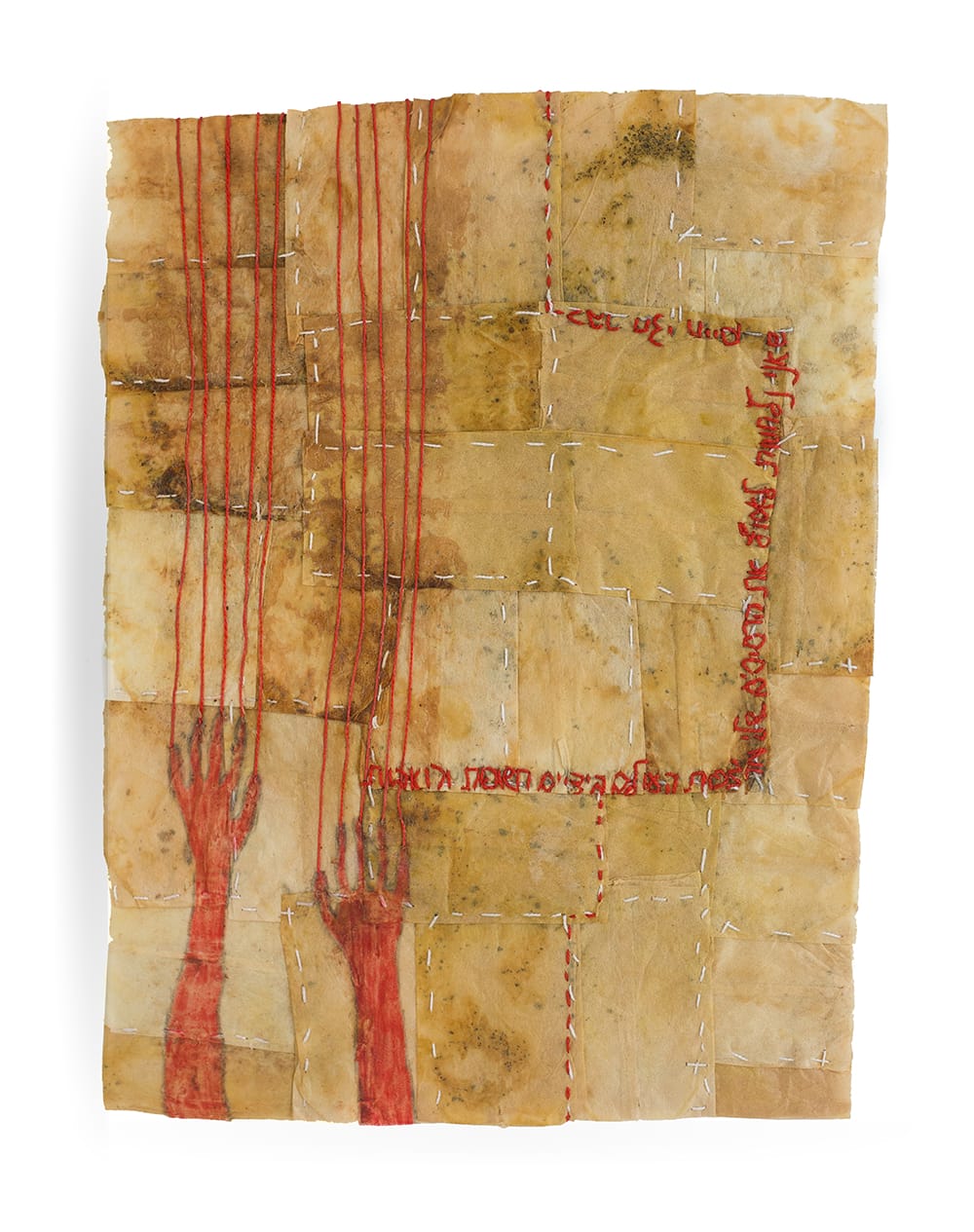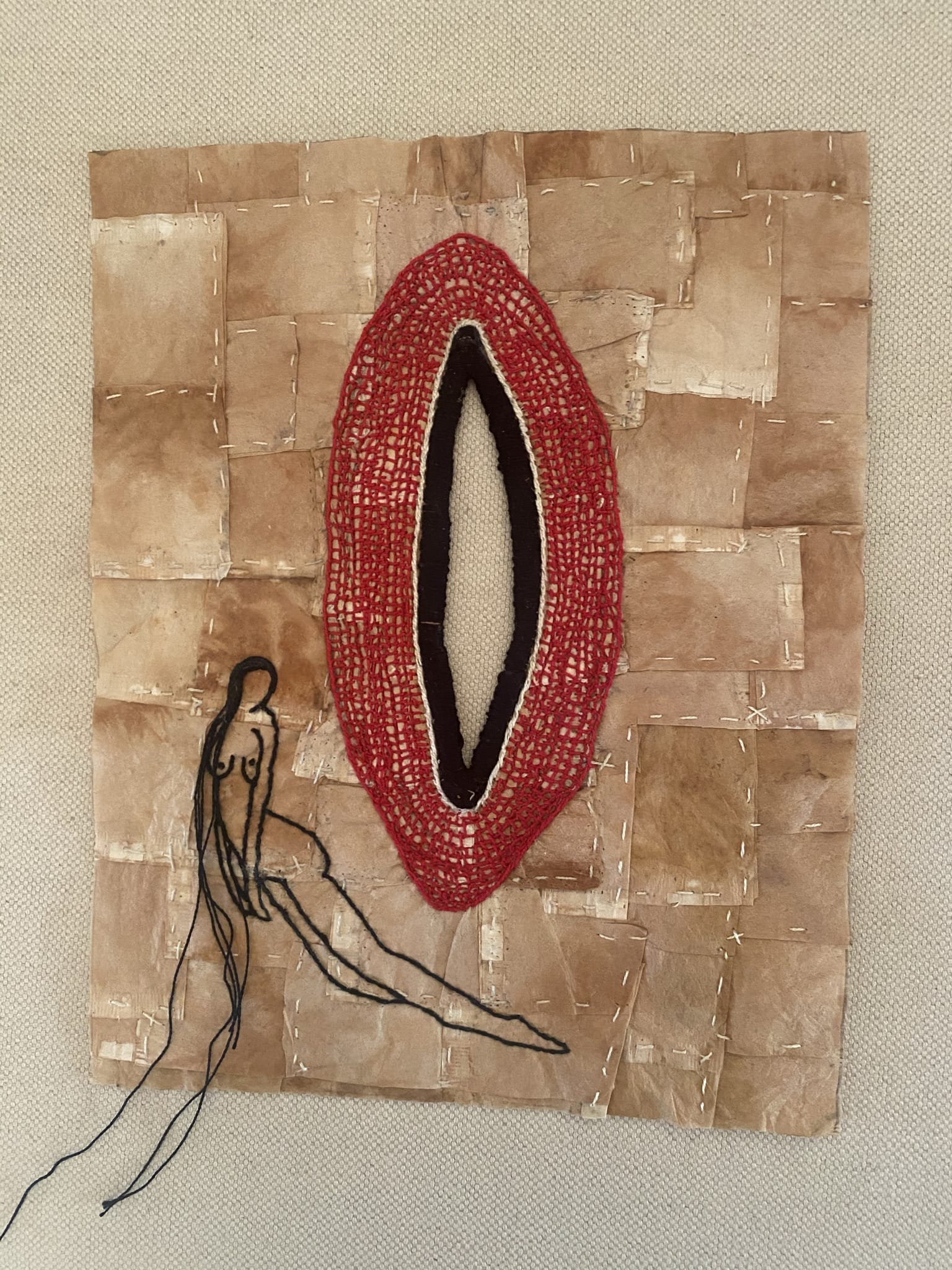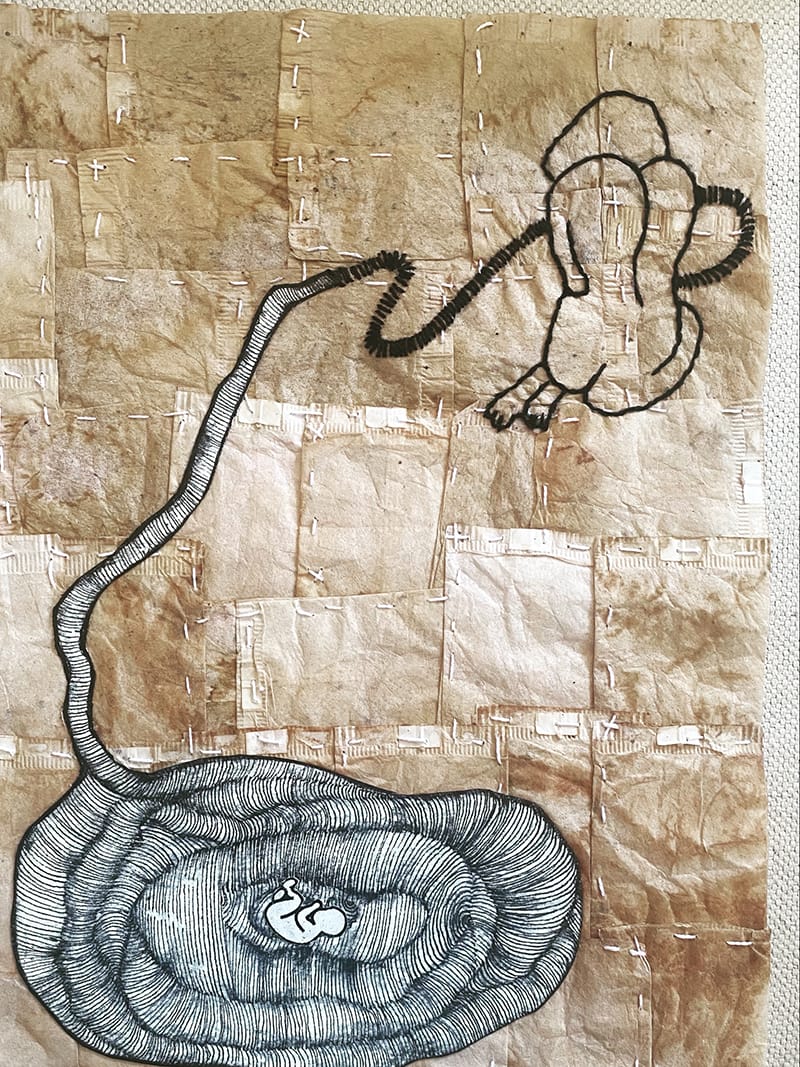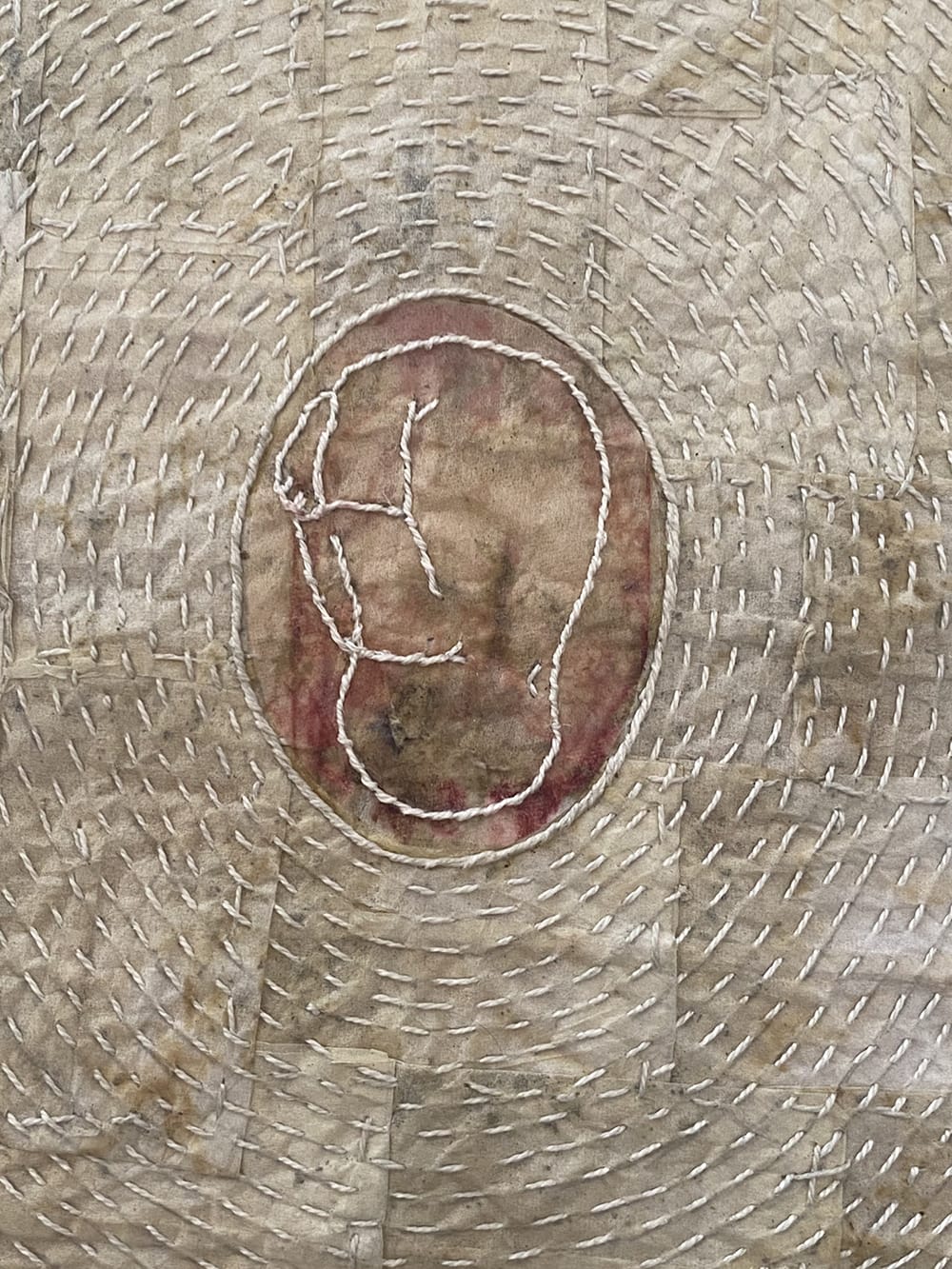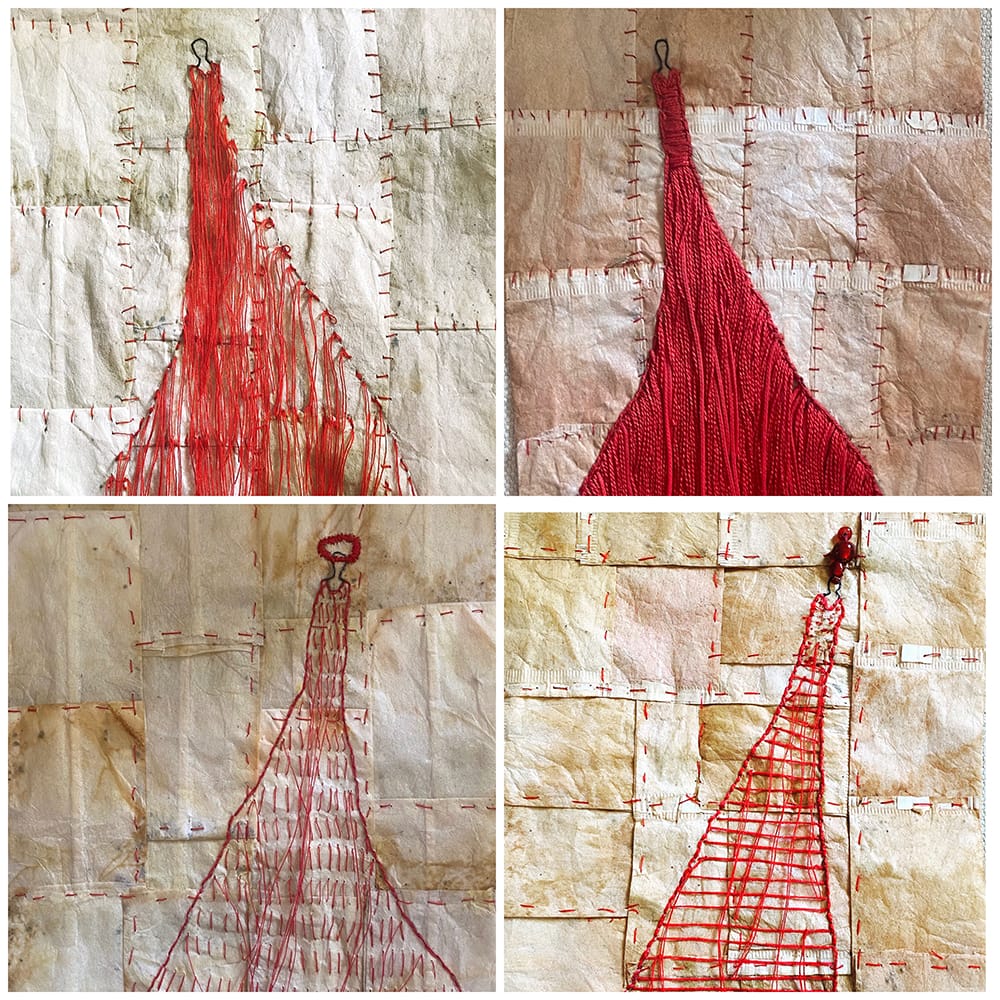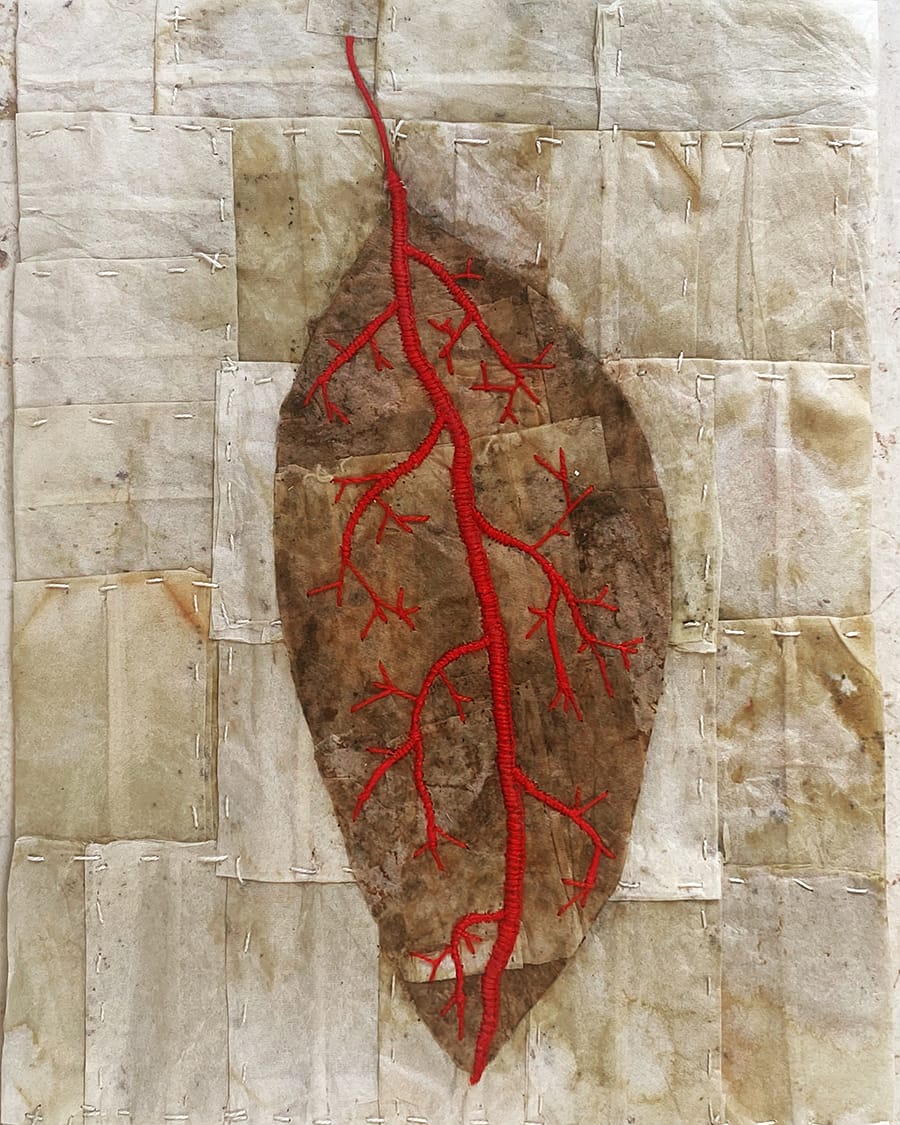DEBBIE OSHRAT
*Featured photos: “Ophelia” Collage, Mixed, 107cm × 107cm, 2020. Photo credit Adi Cohen
Debbie Oshrat (Haifa,1954) lives and works in Ramat Hasharon, Israel. She studied Interior Design and Furniture at NB Haifa School of Design. After a long career in this area, while deepening her knowledge in spiritual subjects such as Reiki or Native American philosophy, she embarked on a new journey by dedicating herself to art. She has chosen to use tea bags to narrate stories combining different techniques, including embroidery and painting, in recent years. Through a language that draws on ancient archetypes and codes, Oshrat gives voice to outdated, obsolete, old and discarded elements, transforming them into a medium for storytelling with and about contemporaneity.
Two of Debbie Oshrat’s works are in the collection of the Yad Vashem Museum. In addition, her works have been shown in galleries and institutional venues in numerous exhibitions in Israel.
When did you realize that art was your path?
I studied Interior Design and Furniture and worked in that area many years. About 10 years ago I decided to dedicate myself to painting. I knew it was either now or never . . .
Used tea bags are the basic material of your works. Why this choice?
As a daughter to Holocaust survivors, my work with tea bags started from the number tattooed on my mother’s hand, being an Auschwitz survivor. The look of her aging arm skin triggered me on a quest for a platform with texture and coloring to be as close as possible to the look of her aging skin, so I found used tea bags to be the closest resemblance. Also, it enabled me to touch and to unravel the “Conspiracy of Silence” prevailed amongst Holocaust survivors.
Your works are the result of a patient work of dismantling, reassembly, sewing. Is there an ancestral memory in this process, a sort of feminine ritual that has its roots in the mists of time and is transformed here into an artistic gesture, in contemporary language? Is using sewing to create works of art also an assertive choice that emancipates this practice from the traditional classifications of domestic female activity, mostly hobby or craft?
Patience in sewing, like most women’s crafts is a feminine feature. For generations, women were the ones who did the weaving, embroidery and sewing, but still routine feminine work was an underestimated activity in patriarchal cultures.
In my works I revive old materials, correspond with ancient world of crafts using the language of “The Wild Woman” converting them into the contemporary world – actual, living and kicking.
What is ‘memory’ and how and how much is it inspiration for your artistic investigation and practice?
“Memory” is the ability of an organism to store information from the environment through its various senses. The word “memory” refers to both the ability to store information and to the information stored itself.
Almost every work of art is associated with a type of memory, pure memories from past and present experiences, or memories and images from previous incarnations.
Used tea bags reflect from one hand the conversation with the people who used them, and from the other hand the softness, warmth and the tender layers, that simulate a maternal blanket that protects, hugs and comforts from vulnerability. . .
Is art more catharsis or more cure, or what else, in your opinion?
Art and creation for me are both Catharsis and Healing. Sewing and embroidery as a mending process of the mind is a fundamental principle in my works. The mending does not hide the injuries of the soul but contains them, respects them and patches them as much as possible.
Sewing used tea bags to each other is a ritual. This ritual is an anti-phobic and anti-anxious act, that helps to deal with difficulties and also heals. The ritual of sewing is a correcting and connecting acts to what is meant to fall apart and crumble.
Your works deal with many female themes with great sensitivity. Some – I think for example the body of works NOGA INTO THE HEART – investigate and deal with very intimate and personal themes. How much autobiographical is your work? How much do art and life coincide for you?
My observation of the inner and outer world is through eyes and feminine energies. This is how I implement it in my works, using feminine techniques . . . traditional techniques of past years . . . the essence of wild and real woman. I work hard on contrasts and opposites, dealing with difficult and painful personal issues, turning them into an aesthetic, feminine, delicate and beautiful work. I expose very intimate work bodies and make them collective, for public domain.
How are your works born and developed?
I am highly connected to the spiritual world, usually my ideas come through dreaming and meditation.
Is there a work that is so deeply part of you that you don’t want to part with it?
At the beginning of my artistic path, I kept my work as a secret belonging only to me. I went through a slow process of sharing my work with my closest environment, then I developed into spreading it into a wider environment, later to open up to whole world in the form of exhibitions. Very slowly and with many difficulties I also agreed to sell some of my works.
Works I did not agree to sell, which I donated to the “Yad Vashem” (A Holocaust remembrance Museum in Jerusalem), are works which contain the tattooed number from my mother’s hand.
What are you working on right now?
I am currently in the process of consolidating my next topic, exploring a number of options.

